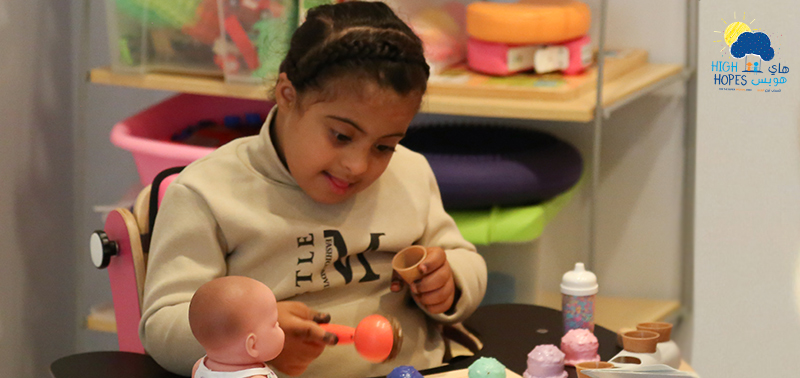When a child starts stuttering one of the questions that concerns parents is ‘what is the best approach? Wait or consult a speech therapist? Should I be worried or not?’. In this article we will briefly discuss some points to help you make a guided decision regarding stuttering in young children.
Stuttering is a disorder that affects speech fluency; in other words, it is an impairment that affects speech flow. People who stutter know exactly what they want to say but have difficulties saying it. An easy way to detect a speech disorder is when your speech gets more attention than its content, meaning the way you speak attracts more attention than what you have to say.
Talking through a long period of time is a complex task and we all have some level of disruption in our speech fluency from time to time. These disruptions are what we call typical disfluencies: repeating whole words (would you like coffee OR OR tea?), repeating whole sentences (Today I AM GOING TO, I AM GOING TO my new office), and interjections (I’d like UHM…coffee). People who stutter show stuttering-like disfluencies including: blocks (getting stuck while talking and not being able to get a word out), sound repetition (F-F-F-F FORGET about it), prolongation (I like to run and SSSSSSWIM) and syllable repetition (I’d like coffee and SUG-SUG-SUGar).
Stuttering frequently starts between 2 and 6 years of age, and while some children sometimes go through periods of relative disfluencies, they usually overcome them naturally before 6 months. These disfluencies are mainly typical with no accompanying factors (tension, body movements, facial tics, etc.).
It is recommended that you book an appointment with a speech and language therapist, when your child is stuttering and presents one or more of the below:
- A close relative who stutters
- High number of disfluencies and stuttering like disfluencies
- Onset from 6 months to 1 year or longer with no spontaneous recovery
- Your child started stuttering late (after 3 and a half years old)
- Male gender
- Getting frustrated
- The child has difficulties saying certain speech sounds, and unfamiliar people may have difficulties to understand them.
- Withdrawing from speaking situations
- Associated body movements (blinking, facial tics, clenching fists, associated movement of legs, arms, or head, etc).
When you visit a speech therapist regarding your concerns about stuttering, they will need to take into consideration many aspects in order to diagnose your child; the therapist will collect a variety of information when completing an interview and assessment. First, an initial consultation to review your child’s speech and language development and medical history will be completed. Next, the therapist will carry out standardized assessments that will provide detailed results regarding your child’s speech fluency and speech and language skills (for example, a count of stuttered syllables per 150 to 500 spoken syllables, etc.). When the assessment is finalized your speech therapist will be able to give a diagnosis with a severity rate and propose a therapy plan. The therapy plan will include parents, speech therapist, teacher and any other adult involved in the child’s daily activities, such as teacher, tutor, nanny, grandparents, etc.
When therapy is necessary there are two different approaches in early intervention for stuttering: direct and indirect. We will have an indirect therapy approach, when the therapist guides you to make effective changes in your child’s communicative environment in order to promote speech fluency; for example, slowing down your own speech rate, making fewer communicative demands, etc. The direct therapy approach, on the other hand, is applied when the therapist gives your child direct feedback about their speech, for example, ‘I heard a bump! Let’s try to use your easy and smooth speech?’
The Lidcombe Program is an example of a direct treatment approach designed especially for early intervention. This program was developed in Australia and is named after the Sidney’s neighborhood where the Australian Stuttering Research foundation was based. Nowadays it is recognized as the best evidence-based treatment for young children who stutter with a very high recovery rate. In this program parents will attend coaching sessions with the speech therapist and learn how to complete activities to promote fluency at home, as well as learning how to measure the stuttering severity. This is a behavioral program divided in 2 stages: stage 1 and 2. Stage 1 consists of weekly 60-minute session with the caregiver, the child, and the therapist. Only one person oversees the treatment at home and he/she should attend the sessions consistently from beginning to the end. Stage 2 starts when the severity rate reduces and stuttering becomes less frequent or stops; session duration will also be reduced to 30-minute and only the caregiver is required to attend the appointment with the speech therapist for maintenance. If the severity rate is reduced, sessions will continue decreasing gradually to every two weeks, once a month, every two months and so on. The follow-up period comprises of 12 months. Parents who completed the Lidcombe program reported a positive experience, as learning how to promote and manage their child’s fluency gave the parents a feeling of empowerment.
Some advice on promoting speech fluency at home:
- Speaking in short sentences with age-appropriate vocabulary
- Allowing the child to finish their sentences before you respond
- Encourage good turn taking and eye contact during dialogues
- Try to establish a calm and relaxed atmosphere and use a natural, un-hurried speech.
- Try to create a moment during the day where you can give your child undivided attention to communicate.
Myths about stutter:
- Being nervous or anxious may cause stutter.
- Stutter is caused by imitating others who stutter.
- Saying ‘think’ or ‘breath’ before you speak helps with stutter.
- People who stutter are highly intelligent.
- People stutter for attention.
- People can control stuttering if they have the motivation.
- Stuttering is caused by a trauma when learning how to speak.
If you have any other questions about stuttering or the Lidcombe program, please feel free to contact us our speech and language therapy team will be happy to assist you.




